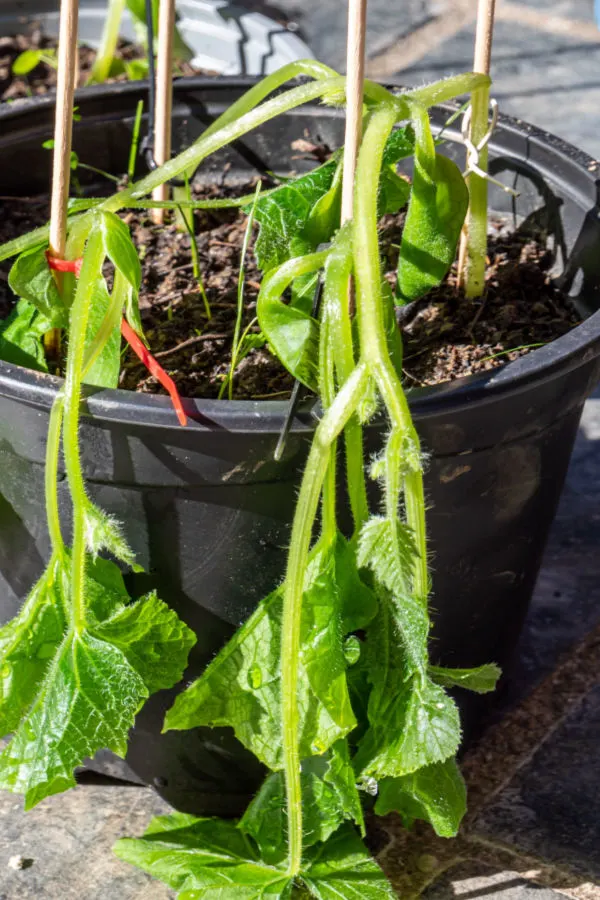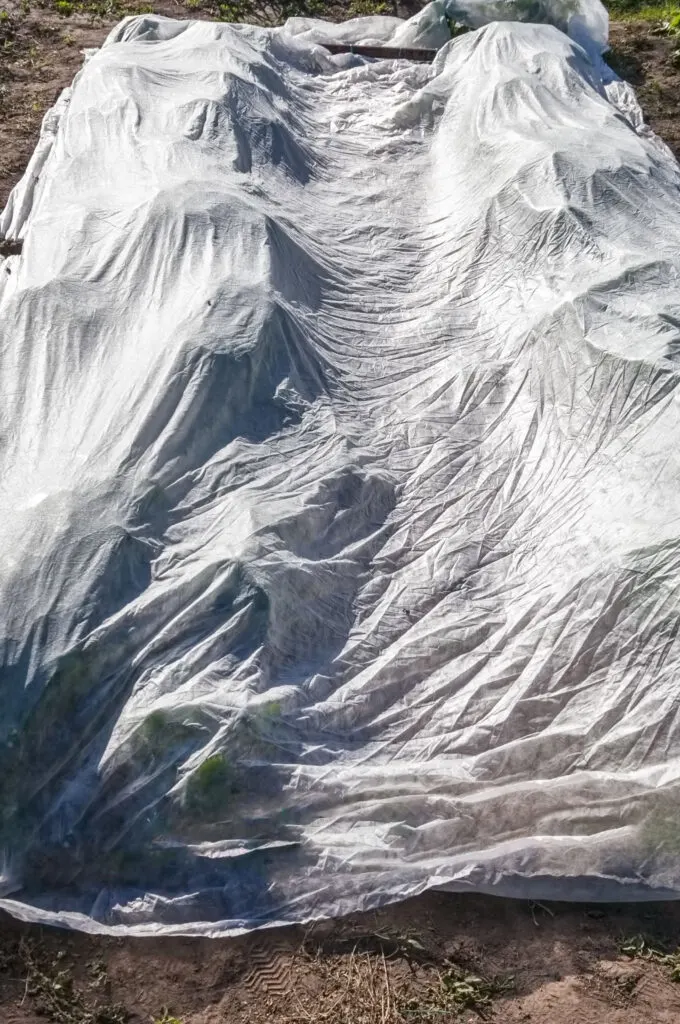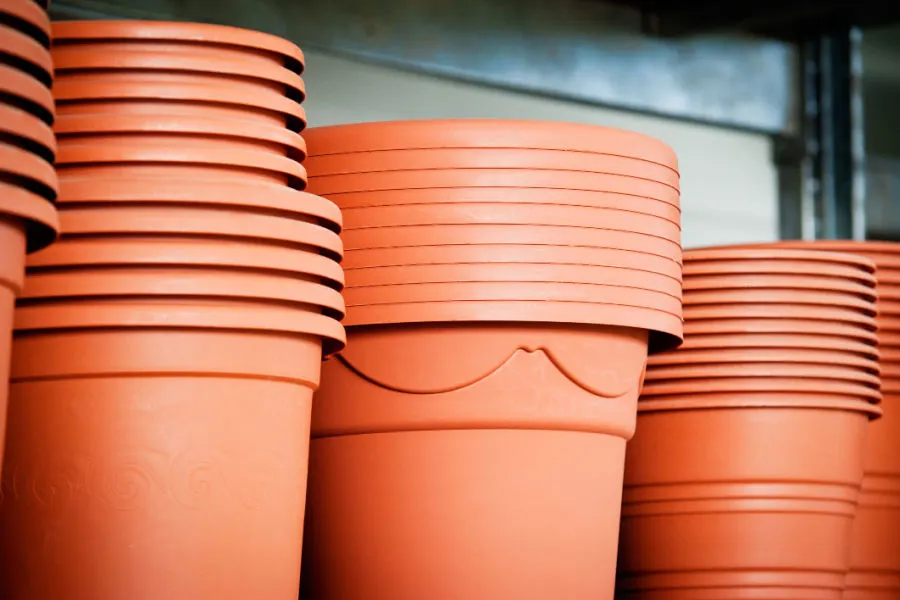Looking for a few great ways to protect your vegetable plants and flowers from a late spring or early fall frost or freeze?
There is nothing worse than waking up and seeing frost damage on your vegetable plants. Whether it be a late spring frost that damages or kills tender young seedlings and plants, or a late-season frost or freeze that ends your growing season early, it can be a hard pill to swallow.
Quite often, a freeze or even a hard frost can entirely wipe out unprotected plants. And even when it doesn’t, it can leave them weak and feeble for the rest of the growing season. Unfortunately, when it comes to a spring frost, that can mean little to no production or growth for your plants all summer long.
Millions of dollars are lost in home vegetable gardens each and ever year due to frost damage. Whether growing your own plants from seed or purchasing transplants at a local nursery or garden center, it can be expensive to plant a garden. And even more costly when you have to replant it!
How & Why A Frost Damages A Plant
So just exactly how does a frost harm vegetable plants? For starters, a frost is basically the frozen form of dew. When there is enough moisture in the air and the temperature cools down, dew forms on the foliage of plants.
When it’s warm, dew can actually be quite beneficial to plants, providing moisture that the leaves can soak in to help hydrate the plant. But unfortunately, when a frost occurs, instead of water, ice crystals form on the foliage and within the stem walls of the plant.
When this happens, the ice crystals expand. And just like a pipe will burst when it freezes and expands, the ice ruptures the stems and cells of the plant. Especially if the sun hits the crystal and plants as it rises. The result is either extensive damage to the plant’s structure, or complete destruction, killing the plant off entirely.

Even if the plant survives, the damage to the stems and foliage make it nearly impossible for it to recover. From that point on, the plant will have trouble taking in water and nutrients. And because the pathways are damaged, even if it is able to take in some nutrients, it’s unable to get it to the rest of the plant.
Quite often, a portion of the plant’s leaves will brown off and shrivel. As will some of the stems if the damage is severe enough. Either way, the plant will have serious health and production issues for the remainder of the growing season.
Prevention – The Key To Success
Obviously, since it is nearly impossible to help a plant recover after it has been hit by a frost, prevention is the best path to success. The good news is there are some fairly easy and low cost ways to protect your plants. The key is putting them in place in plenty of time when you know they will be in danger!
With protection in mind, here are some of the best methods to employ to keep your plants safe from a damaging frost or freeze. We have also included a section on what to do early in the morning to help save plants that may have been hit by a surprise overnight frost.
How To Protect Plants From A Frost or Freeze
Avoid Planting Too Early
First and foremost, it’s vital to allow the soil to warm and wait at least long enough that the biggest chance of cold weather has passed. Don’t allow yourself to be fooled by early warm weather into planting before it’s time.
In fact, rushing the season and planting too early is the biggest cause of all when it comes to home vegetable garden frost damage.

So how should you really wait to plant? The best advice of all is to use your specific area’s frost and freeze dates as a planting guide. Just because an early heat wave may get you thinking of planting, make sure it is safe in your area.
Also, just because your local store may have plants out – it doesn’t mean you should be planting them outdoors yet!
Always wait until your frost dates have passed to plant. In fact, we usually wait a full 10 days after our dates just to be safer. Remember that plants grow better in warm soil. Almost always, plants that go in later grow faster and better than ones planted in early cool soil.
So much so that they usually catch up and surpass those early plants and outperform them! So remember, waiting a bit is always the better choice than risking a cold snap. See: Understanding Growing Zones & Frost Dates
Covering Plants With A Frost Cloth – How To Protect Vegetable Plants From A Frost or Freeze!
The easiest and quickest way to protect your plants prior to an impending frost is with a frost cloth. Frost cloths, or frost blankets as they are often called, provide great protection from moderate frosts and even a light freeze.
One of the biggest mistakes home gardeners make is to cover their plants with plastic. This can suffocate plants quite easily. Even worse, if left on for too long, it can burn the foliage of plants as the sun bakes through it the next day.

Cloth sheets and heavy blankets can work in some cases, but often injure plants with their weight. Especially once the dew soaks in and the blanket crushes down on tender stems and foliage.
Why Frost Cloths Work Best…
Frost cloths and sheets work by helping to keep moisture off plants and retain heat from the soil below. Both help to stop a frost from forming on the foliage of plants. Even better, frost cloths allow light and air through, keeping plants safe as well.
Because you can purchase them in large sizes, they can be placed over large areas of plants or flowers. They are relatively inexpensive and can be used time and time again. Even better, they can be cut down to also place over small bushes or other plants that need protection from a cold night.
Having them on hand of course is vital to success. Frost and freeze warnings can come up quickly, and finding frost blankets locally can often be challenging last minute.
Covering Plants With Buckets & Pots – How To Protect Vegetable Plants From A Frost or Freeze!
If you are looking for a homemade solution that can be free – clay pots, 5 gallon buckets and plastic planting pots can come to the rescue as well. For small plants, 2 liter bottles cut open at the bottom will work when placed into the soil above the plant. Always place a few tiny holes in the bottle to allow for a bit of air to plants.

The key to success is to select pots or buckets that are large enough to cover plants without touching the foliage. This keeps the plants safe, and prevents damage if the sun heats up the cover. If you are worried about the buckets blowing off, a rock placed on top can help hold them in place.
All of the above homemade options will help keep soil warmth in and moisture off of the plants. If using homemade covers, always remove them as soon as it is safe in the morning. They can all make it hard for plants to receive air. They can also quickly overheat plants if left in place as they absorb morning sunlight.
What To Do When A Surprise Frost Hits – How To Protect Vegetable Plants From A Frost or Freeze!
No matter how well you plan, wait or prepare, a surprise frost will happen at some point. You listen to the forecast and there is no chance of a frost. Then you wake up, and your plants have frost on them! Is it too late? Can you save them?
The good news is if you act early, you have a good chance. By rinsing the frost off the plants early, before the sun can hit the foliage, you can often prevent most or all of the potential damage to your plants. But the key is to get that frost off as quickly as you can!
Here is to protecting your plants from a frost or freeze, and to keeping your vegetable plants safe, strong and healthy all season long. Happy Gardening! Jim and Mary.
Jim and Mary Competti have been writing gardening, DIY and recipe articles and books for over 15 years from their 46 acre Ohio farm. The two are frequent speakers on all things gardening and love to travel in their spare time.
As always, feel free to email us at thefarm@owgarden.com with comments, questions, or to simply say hello! You can sign up for our free email list in the subscribe now box in the middle of this article. Follow us on Facebook here : OWG Facebook. This article may contain affiliate links.

